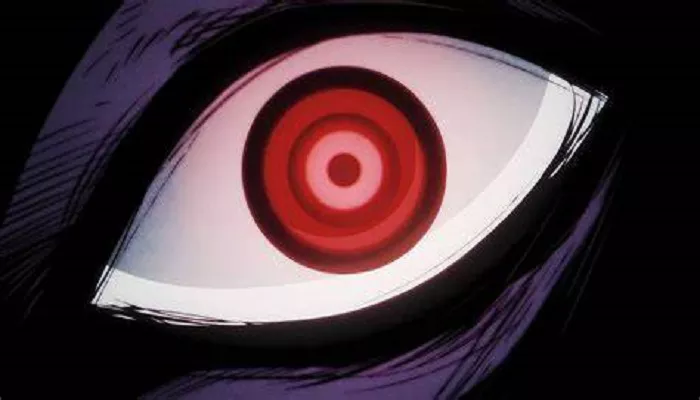In the vast and intricate universe of One Piece, few characters have captured the imagination of fans more than Imu, the enigmatic ruler of the World Government. First introduced in Chapter 906, Imu’s presence is shrouded in mystery, with his face obscured and his motives hidden beneath layers of secrecy. This article delves into the depths of Imu’s character, exploring his identity, role, and symbolic significance within the narrative. By examining his connection to the Celestial Dragons, his control over the World Government, and his rivalry with the D. Clan, we unravel the threads of his power and the implications of his existence on the story’s overarching themes.
Imu’s Identity and Symbolism
Celestial Dragon Origins
Imu is the undisputed leader of the Celestial Dragons, a race of elitist humans who claim divine descent and rule over the world from the Red Line’s apex in Mariejois. His position as the “King of the World” grants him absolute authority, yet his true identity remains unknown. Speculation abounds about his origins, with theories suggesting he might be one of the original 20 kings who formed the World Government 800 years ago, possibly even the progenitor of the Celestial Dragons themselves. This lineage ties him to the “Void Century,” a lost era erased from history, hinting at a connection to the ancient conflict that birthed the D. Clan’s legacy.
Divine Authority and Secrecy
Imu’s physical appearance is meticulously concealed, a deliberate narrative choice that reinforces his god-like status. His shadowy visage, glowing eyes, and the throne room’s grandiose architecture—dominated by a massive straw hat—symbolize his detachment from humanity. By hiding his face, the story emphasizes his role as a mythic figure, transcending mortal comprehension. This secrecy also serves a practical purpose: it allows Imu to manipulate events from the shadows, avoiding direct accountability for his actions.
Power and Control
The World Government Hierarchy
Imu’s authority is enforced through the Five Elders, a council of Celestial Dragons who act as his direct subordinates. These figures, each specializing in a specific domain (military, law, intelligence), execute Imu’s will without question. Below them lie institutions like the Navy, Cipher Pol, and the Seven Warlords, all designed to maintain order and suppress dissent. This hierarchical structure mirrors real-world power dynamics, where centralized authority masks systemic oppression.
Ancient Weapons and Global Manipulation.
Imu’s control extends beyond political maneuvering. He wields the power to deploy the Buster Call, a catastrophic military response that erases entire islands from existence. Additionally, he is shown holding the photographs of Luffy, Blackbeard, and Shirahoshi—symbols of the D. Clan and the ancient weapon Poseidon—indicating his intent to eliminate threats to his rule. This control over both brute force and strategic targets positions him as a mastermind orchestrating global events.
The D. Clan Imu’s Greatest Fear
The “Gods” vs. the “D. Will”
Imu’s deepest fear lies with the D. Clan, a scattered group of individuals marked by the initial “D” in their names. Historically, the D. Clan opposed the Celestial Dragons during the Void Century, earning them the title “God’s Natural Enemy.” Imu’s fixation on eradicating the D. Clan—evidenced by his destruction of Lulusia Kingdom and his targeting of Luffy and Blackbeard—reflects his paranoia about a prophesied rebellion that could overthrow his regime. This conflict mirrors themes of revolution and resistance against tyranny, a recurring motif in One Piece.
The Legacy of the Void Century
The Void Century’s secrets are central to Imu’s motivations. By erasing this era, he seeks to bury the truth about the D. Clan’s past and the World Government’s origins. The Poneglyphs, ancient stone tablets scattered across the world, hold this forbidden history, and Imu’s relentless pursuit of their destruction underscores his desire to maintain control over the narrative. Characters like Nico Robin, who can read the Poneglyphs, become direct threats to his power, further fueling his obsession with their elimination.
Imu’s Role in the Narrative
The Puppeteer Behind the Curtain
Imu functions as the ultimate antagonist, embodying the systemic corruption and inequality that the Straw Hats oppose. His actions—such as ordering the assassination of Vivi and Kobra—highlight his willingness to eliminate even nominal allies if they threaten his rule. By positioning himself as the unseen force manipulating events, Imu elevates the stakes of the story, transforming the conflict from a battle against pirates and marines into a struggle for the very soul of the world.
Imu’s character is a masterstroke of narrative design, blending political intrigue with mythic symbolism. By keeping his identity and goals obscured, Eiichiro Oda creates a sense of dread and anticipation, inviting readers to speculate about his role in the story’s climax. As the Straw Hats inch closer to uncovering the Void Century’s secrets, Imu’s influence looms larger, reminding us that the greatest battles are often fought not just with swords, but with the power of truth and memory.
Themes of Power and Identity
Imu’s character explores themes of power, identity, and the abuse of authority. His god complex and dehumanization of others contrast sharply with the Straw Hats’ emphasis on camaraderie and individual freedom. The Celestial Dragons’ belief in their own superiority mirrors real-world issues of classism and colonialism, making Imu a symbol of institutionalized oppression. Through his actions, the story critiques the dehumanizing effects of absolute power and the importance of challenging oppressive systems.
Conclusion
Imu’s enigmatic presence in One Piece serves as a cornerstone for the series’ exploration of power, history, and resistance. As the hidden ruler of the World Government, he personifies the corrupt elite, wielding control through fear, manipulation, and the erasure of truth. His conflict with the D. Clan and his obsession with maintaining dominance drive the narrative forward, setting the stage for an epic clash between freedom and tyranny. While his full motivations and capabilities remain shrouded in mystery, Imu’s role as the ultimate antagonist ensures that his impact on the story will be felt long after his true nature is revealed.


